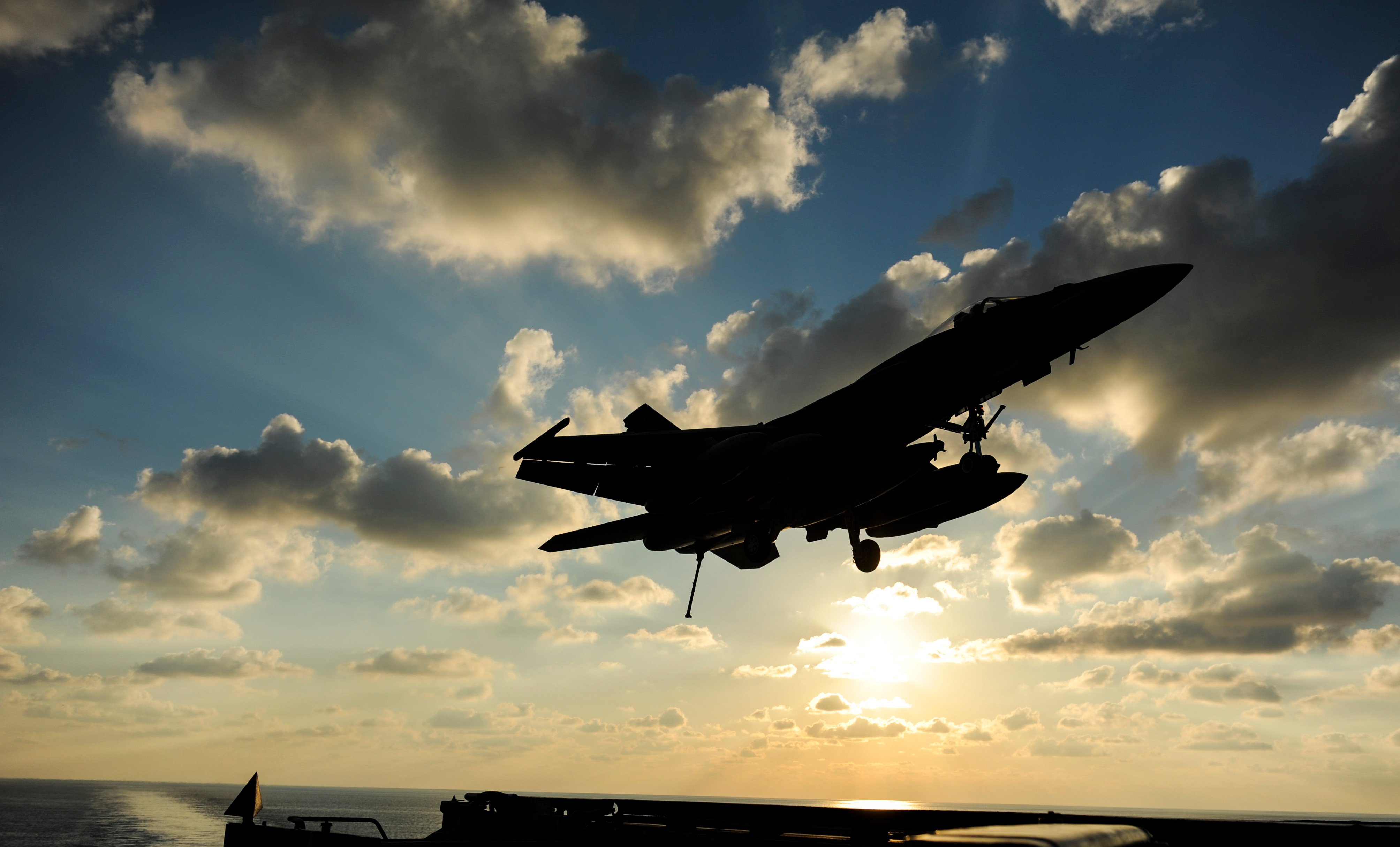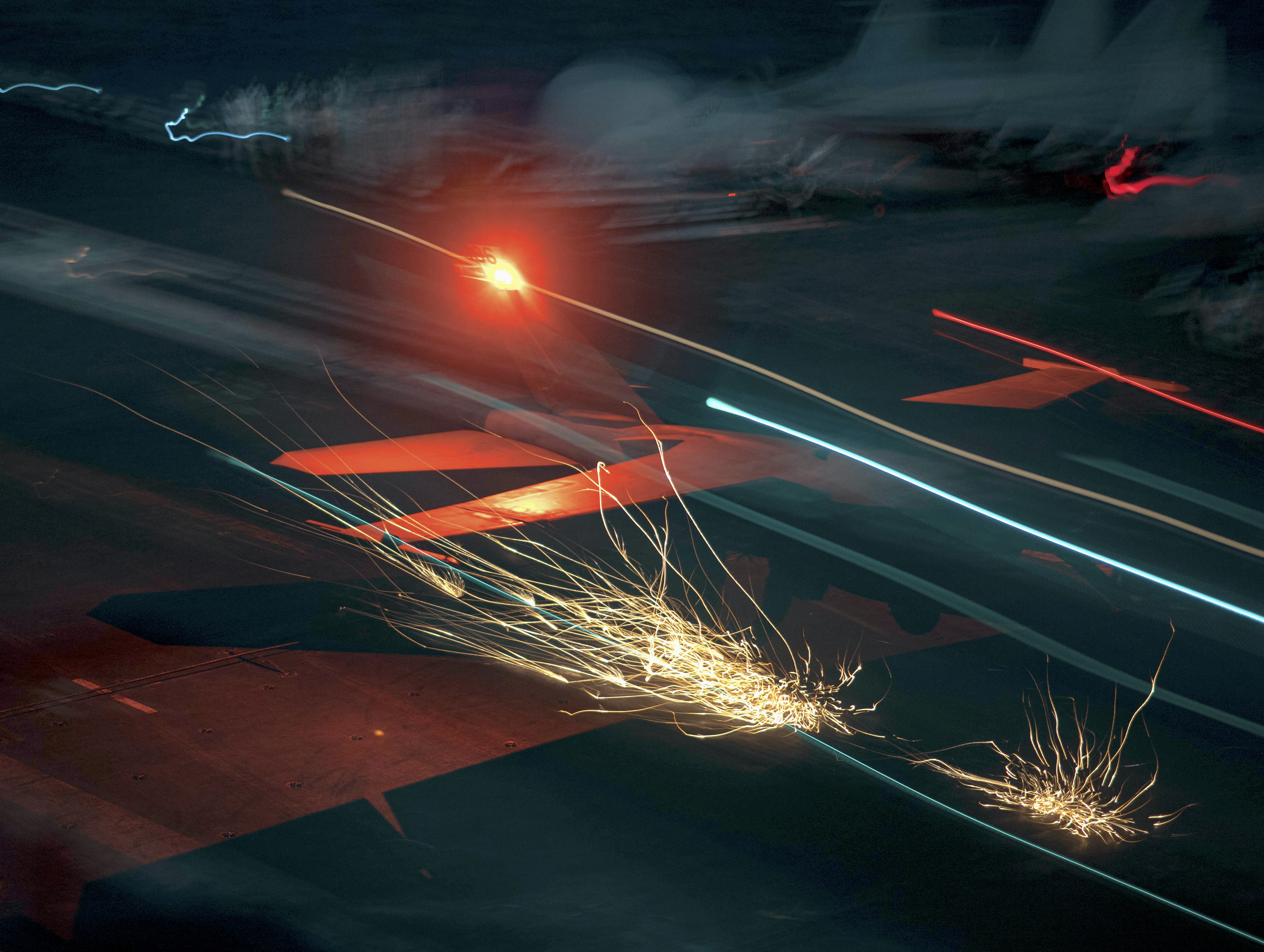
An F/A-18E Super Hornet, assigned to the Argonauts of Strike Fighter Squadron (VFA) 147 prepares to land on the flight deck of the aircraft carrier USS Nimitz (CVN-68). US Navy Photo
The Navy is leaning toward replacing its fleet of Super Hornets with another manned fighter that will work with emerging unmanned aircraft concepts under the umbrella of the service’s Next Generation Air Dominance program.
Rear Adm. Gregory Harris, who leads the chief of naval operation’s air warfare directorate (OPNAV N98), said Tuesday that the aircraft following the Super Hornets will “most likely be manned,” but that the Next Generation Air Dominance program will include a mix of both manned and unmanned platforms.
“As we look at it right now, the Next-Gen Air Dominance is a family of systems, which has as its centerpiece the F/A-XX – which may or may not be manned – platform. It’s the fixed-wing portion of the Next-Gen Air Dominance family of systems,” Harris told attendees at a Navy League breakfast.
“But we truly see NGAD as more than just a single aircraft. We believe that as manned-unmanned teaming comes online, we will integrate those aspects of manned and unmanned teaming into that,” he continued. “Whether that – we euphemistically refer to it as our little buddy – is an adjunct air-to-air platform, an adjunct [electronic warfare] platform, discussion of could it be an adjunct advanced early warning platform. We’ll have to replace the E-2D [Advanced Hawkeye] at some point in the future, so as we look to what replaces that.”
The Navy has been inching toward a family of systems approach for NGAD over the last several years. USNI News previously reported the service was leaning toward a manned fighter aircraft as part of the NGAD family of systems. The Navy last year quietly stood up its NGAD program office.
Harris said the Navy has divided work on the NGAD program into two increments – increment one will determine the replacement for the Super Hornets, while increment two will assess the follow-on for the EA-18G Growler. While the service has used F/A-XX to refer to the F/A-18 E/F replacement, NGAD refers to the family of systems as a whole.
The service must replace the Super Hornets and the Growlers by the 2030s. Chief of Naval Operations Adm. Mike Gilday has said the service must move faster in developing its sixth-generation fighter and that the Navy cannot afford to move at the same pace it did when pursuing the F-35 Joint Strike Fighter Lightning II.
As the Navy continues pursuing new unmanned technology, the service is striving to have sixty percent of its carrier air wing be unmanned platforms.
“We’re going through the study portions of what Inc two will be to replace the EA-18G Growler. And we expect that that family of systems will be a combination of manned and unmanned,” Harris said.
“Right now – notionally – looking at driving towards an air wing that has a 40-60 unmanned-manned split and overtime shift that to a 60-40 unmanned-manned split. So to try to drive an air wing that is at least 50 percent or more unmanned over time,” he added. “Again, a lot of that’s going to be dependent on the success we see with the MQ-25 Stingray, on our ability to truly learn how to operate around the aircraft carrier and safely execute that both on the flight deck and then airborne.”

An F/A-18E Super Hornet, assigned to the ‘Blue Diamonds’ of Strike Fighter Squadron (VFA) 146, lands on the flight deck of the aircraft carrier USS Theodore Roosevelt (CVN-71) on Jan. 28, 2021. US Navy Photo
The NGAD program is currently in the “concept refinement phase,” which is when the service will work with industry to determine the latest technology and whether it could pursue an unmanned fighter aircraft, Harris said. He expects the Navy to have “a better idea” within the next two or three years as to whether it will buy a manned or unmanned fighter to follow the Super Hornets.
“That concept refinement phase and the teams that we have with our prime air vehicle vendors will start to advise what’s in the realm of possible, has autonomy and artificial intelligence matured enough to be able to put a system inside an unmanned platform that has to go execute air-to-air warfare,” Harris said. “I think air-to-air warfare is one of, if not the most, complex ones to try to put into autonomy.”
He noted there are multiple factors to consider in developing an unmanned fighter aircraft, including the complicated policy of an unmanned system picking targets to fire on, the future rules of warfare for unmanned systems choosing targets and how the platform would evaluate the air warfare environment the way a human operator does.
“All of those things that an aviator learns as they learn how to do air combat maneuvering or ACM are things that we’re going to figure out how to one, sense in the unmanned platform, and then two, react to. That will take some time,” Harris said.
“Having an unmanned platform out there as an adjunct missile carrier I see as not a step too far, too soon. I could have an unmanned friend. I typically say a flying Dorito chip when I’m thinking about it – doesn’t have to be that, right,” he continued. “An unmanned system with missiles I can clearly in my mind envision a way to say, ‘fine defensive combat spread. Shoot on this target.’ And I will squeeze the trigger or I will just execute – enable that unmanned platform to shoot the designated target. That doesn’t stretch beyond my realm of imagination.”
The Navy is working with the Air Force – which is pursuing its own NGAD program – during the concept refinement stage. Harris said that while he expects the two services to have different air frames, the systems inside the platforms will be similar.
“So if you think about it, a contractor may have a particular sensor – let’s just use the radar as an example – and over time, perhaps the performance of that radar isn’t what you want, either from a sustainability standpoint or purely from a capability standpoint,” he said. “With that open mission system architecture, you have an ability to more rapidly replace that without getting into vendor lock. And we’ve seen vendor lock create problems for us before. We firmly believe that competition will give us a better reliability, lower sustainment costs and lower the overall costs.”
The Navy is also open to different contractors joining forces to tackle NGAD, an avenue Harris said he has urged industry to pursue.
“Our industry primes get very comfortable with the folks they’ve worked with in the past. Some of that’s worked out very well for us, other times it may not have worked as well as we would have liked,” he said. “And I just recommended they broaden their view and look at as many of those folks as we can to team. We also think this will enable a lot of the smaller companies to be able to work into niche markets that they may be very successful in.”
